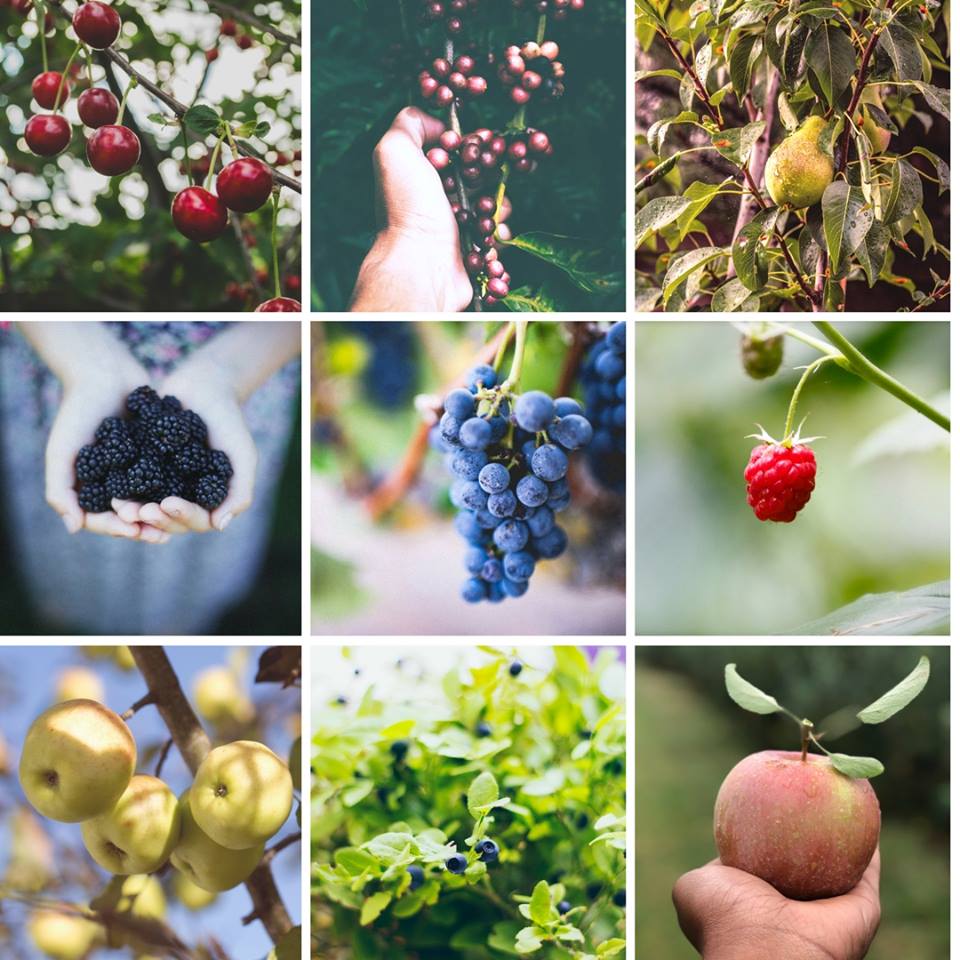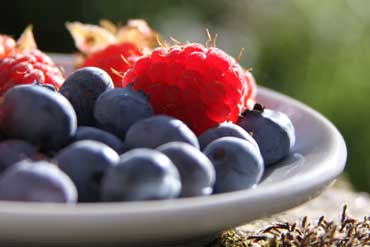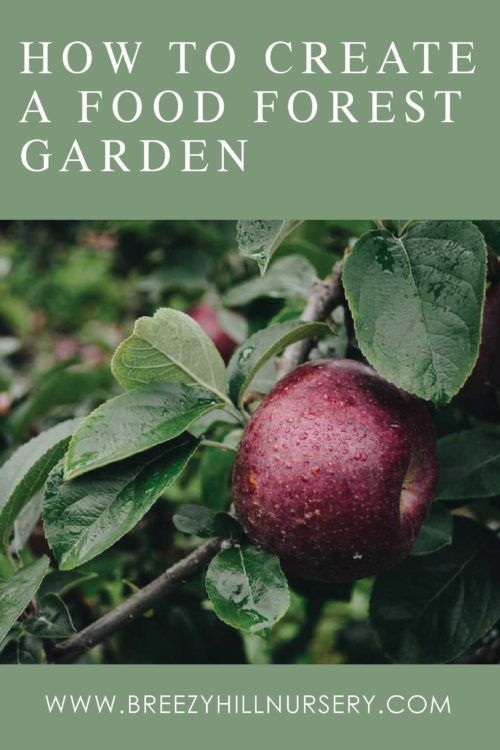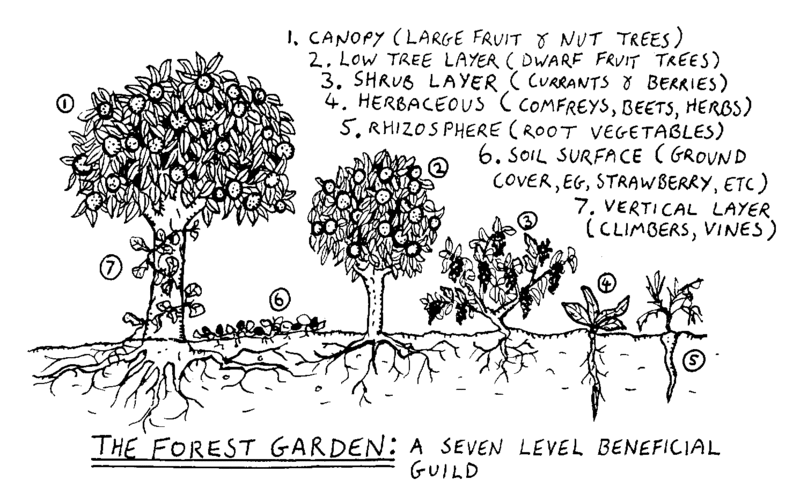Forest Garden Layers - Diagram by Graham Burnett
The many layers of a edible food forest garden:
There are seven layers to a food forest garden.
The first canopy layer which would include a tall fruit or nut tree.
The second low tree layer would include dwarf fruit trees.
The third shrub layer would include berries like raspberries & blueberries.
The fourth herbaceous layer includes plants like beets & herbs.
The fifth layer Rhizosphere you can add in root plants like carrots and potatoes.
The sixth layer soil surface would include ground cover plants like strawberries and plants like creeping phlox to keep weeds down.
The seventh vertical layer could include plants like hardy kiwi and grapes.

Why create a edible food forest garden?
If you like fresh organic food, saving money, enjoying nature and knowing where your food comes then you would enjoy a food forest garden.
It goes by many names, permaculture, edible landscaping, agroforestry or just a food forest. It provides a fulfilling hobby and an abundance of food for your family by Mimicking Mother Nature. Other than the original installation, you won't need to weed, till or irrigate it (too much). Water does play an important role and it's important to get it right in the beginning. One technique used often in a swale system. To retain water and soak it in the landscape.
A Self-sustaining System
It becomes a self-sustaining system that pays you back in spades. Originally coined by Robert Hart in his book Forest Gardening although food forests go way back before then especially in tropical climates. Where there are many that are several hundred years old and are still producing food.
Here are a few to visit online
Here is a 40-year-old cold climate food forest. Geoff Lawton, Bill Mollison and Jon D Liu and Martin Crawford are great people to research for permaculture education. Mark Shepard is our very own Wisconsin Permaculture expert, he also gives tours of his new Forest farm. This great book on smaller scale food forest permaculture by Toby Hemenway is one to reference often. For warmer climates, here is a gorgeous food forest planting in Bradenton, FL by permaculture expert Pete Kanaris.

Choose your plants - for a small area choose one or two varieties of each layer. For larger areas, you can choose multiples of similar plants but with different nuances.
Midwest Sample Edible Food Forest Garden List
Sample list for a Midwest food forest garden would be.
Canopy layer-
- Standard Apple tree- 2 - Liberty & Honeycrisp
- Nut Tree - 2 - American Hazelnut
Low tree Layer -
- Dwarf fruit trees
- Paw Paw
- Cherry
- Plum
- Pear
- Cold Hardy Fig
Shrub Layer -
- Blueberry
- Seaberry
- Goji berry
- Honey Berry
Herbaceous Layer -
- Comfrey
- Mint
- Rosemary
- Dill
- Basil
- Beets
Rhizosphere (root vegetables)
- Carrots (annual)
- Garlic
- Onions
- Potatoes
Soil Surface (ground cover) (helps with weed prevention)
- Strawberries
- Clover
- Mint
- Creeping Thyme
- Phlox
- Verbena
Vertical Layer (climbers & vines)
- Hardy Kiwi
- Grapes Edelweiss & Bluebell
- Smaller squash, cucumbers & melons (annuals)
Planting -
Your site should be open and sunny. The large trees & plants should be at the northern end of your site. For the trees, you can dig a hole add any amendments you'd like. You can sheet mulch the larger areas then add compost and mulch for weed prevention. Plant the smaller plants in those areas.
NOTE: Any of our sales associates here at Breezy Hill Nursery would be happy to answer your questions about purchasing, planting and caring for your garden. Call us at (262) 537-2111.
If you have gardening questions please call or stop by our garden center.
You might also enjoy this post about trees.

